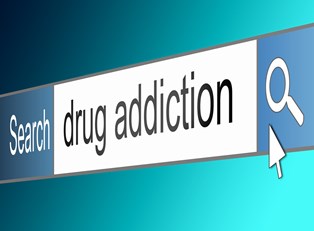Substance abuse is a problem that affects its victims both physically and emotionally, and due to the strong and persistent nature of addiction, it can be an issue that’s difficult to overcome. Underneath the umbrella term “substance abuse” are several subcategories based on the particular substance being abused, each with its own set of unique problems and treatment options. Here is a look at three of the most prevalent types of substance abuse.
Alcoholism
Alcohol abuse is one of the most common forms of substance abuse in the United States today. According to recent statistics, almost 25% of people over the age of 18 reported binge drinking in the last month, and about 17 million people deal with an alcohol use disorder every year.
Long-term abuse of alcohol can lead to a host of physical symptoms that include liver damage, heart attack, stroke, dementia, depression, and nerve damage. In addition to this, people with alcohol abuse problems typically suffer emotionally and socially as well.
Making the determination that someone is addicted to alcohol is not exactly easy, but there are several warning signs to look for:
- Poor performance in work or school
- Neglecting responsibilities
- Persistent legal troubles, such as being arrested for drunk driving
- Drinking in situations where it is considered inappropriate
- Developing a high tolerance to the effects of alcohol
In some instances, a person will not exhibit any of the traditional signs of alcohol abuse, which is known as high-functioning alcoholism. People with this condition may be able to maintain their work and social lives normally while still drinking dangerous amounts. This is a particularly tricky situation because many high-functioning alcohol abusers will deny they have a problem since they don’t fit the alcoholic stereotype.
Drug Abuse
Drug abuse is a broad category of substance abuse that refers to the misuse of both prescription and illegal drugs. This can be a difficult problem to define, since some people would regard any drug use as abuse while others would only consider it a problem if it interferes with a person’s ability to live a normal life.
Some of the most commonly abused drugs include heroin, crack cocaine, meth, and prescription amphetamines—primarily because these substances have some of the highest rates of addiction and cause severe withdrawal symptoms when a person ceases using them.
There are three primary factors that can help contribute to a drug abuse problem—genetics, the environment, and neurological development. While genes are not completely responsible for addiction, there is research that indicates that some people are more predisposed to drug abuse than others, especially those with abnormal levels of dopamine in the brain.
Environmental factors, such as drug-abusing friends, low socioeconomic status, and history of sexual or physical abuse can also increase a person’s risk for addiction. Finally, young people have a higher risk of drug abuse, since the areas of their brains that govern reasoning, self-control, and decision-making don’t fully develop until they reach their mid-20s.
Tobacco Use
Categorizing tobacco use as a substance abuse problem is a controversial decision, since it is seen as more socially acceptable than other substances, such as illegal drugs. However, the use of tobacco products still poses serious health risks to the heart and lungs, and nicotine can be a very addictive substance.
While a people dealing with unwanted tobacco use may not check themselves into an inpatient rehabilitation facility for treatment, they may still seek out some form of organized treatment—such as a smoking cessation support group.



